THE ELECTRIC LAMB STORY - 1949 till Today
Mike Frood is an Island Aid volunteer who supplemented his income by publishing articles in surf magazines around the world. Mike was at Murdock Uni preparing for his Masters Degree when the tsunami and quakes hit Sumatra. He took time off to fly up and help. Mike graduated from Murdock's School of Social Science with a PhD. His thesis was titled "Sustainable Surf Tourism in Indonesia". He is currently studying Medicine in Perth.
Mike had close contacts with the editors of ASL, Australia's largest surf magazine. We worked up this interview in September - October 2005 and the idea was to publish in ASL in time for the tsunami anniversary. The Editor gave the go ahead....... then a strange thing happened.
ASL's publisher pulled the article. On the editor's request, Mike and I had just deleted the section on Paul King, a surf travel operator who features in my interview but I suppose King's friends just could not stand the thought of me, his arch rival, finally telling my side of the Mentawai surf charter saga.
So "surf politics" derailed the publishing of a story that might have helped us raise funds to help the tsunami victims!
The good news is that the (abridged) story will now run in several international surf magazines. Other Australian surf publications are looking at running it as well.
Bear in mind that the language I speak here is "Aussie surf lingo". Just one of a several languages that I have picked up over the years!
Before the tsunami we operated a surf charter tourism business in the Mentawai Islands.
See http://www.mentawai.com
All involved are now very deeply concerned that the Mentawais and Padang will be the next to be devastated by a mega quake and tsunami. (BBC NEWS story)
We are dedicating all our island holdings to management and development to support our non-profit for the benefit of the Island communities. Proceeds from the charter of my yacht are used to support Island Aid.

The full length article. An abridged version almost ran in Australian Surfing Life - October 2005
Where did you grow up?
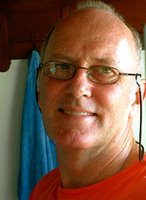 Born in Sydney, started school in Harbord and was always pestering Dad to take us to the beach. Moved to Brisbane for 2 years and then in 1959 Mum loaded us all on an old troop steamer for a long trip to Perth. Dad used to take all the kids sailing on Sydney harbour but the trip across the "Bight" was my first long look at the ocean. I was hooked.
Born in Sydney, started school in Harbord and was always pestering Dad to take us to the beach. Moved to Brisbane for 2 years and then in 1959 Mum loaded us all on an old troop steamer for a long trip to Perth. Dad used to take all the kids sailing on Sydney harbour but the trip across the "Bight" was my first long look at the ocean. I was hooked.Describe an early surfing memory?
We lived in Applecross and my early days were spent in an wood & canvas Canadian canoe exploring the Swan River or sailing with the family in an ancient 18ft Jarrah planked boat. Will never forget scrubbing shag droppings off the deck. Must have been about 100 of them that lived on the boat. Didnt start surfing till I got my drivers licence. My first board was a 9ft something Cordingley single fin plank. Had to take out the passengers seat and back seat in Mum's Morris Minor and stick it through from the boot. Still stuck out the back and the fumes were pretty bad so remember winters driving all the way to Triggs point at 5am with the windows all open wearing my wetsuit and Ug boots to keep warm.
What did you do after leaving Oz? How did you end up in Indo?
In '81 I launched the Electric Lamb in Fremantle and after a miserable winter living aboard in the marina, a group of us decided to sail to Indonesia and beyond. We left with about $200 between us with anchors, ice boxes and a dinghy donated by friends. The tiny island of Lahalurah south of Sumba was our first stop on foreign soil. Jane Liddon was on board and she treated a 2 year old local boy for malaria on day one. The happy kids parents absolutely insisted that we accept a chicken by way of thanks. My first dealings with a local family was amazing. Surfed the coast of Sumba and lucked on David Wiley's bungalow in an un-named bay on the SE coast. Worked our way west to Lombok & Bali and decided not to go back to Aus. Indonesia is "magic on a stick". Why go further if you surf and have a yacht.
What were you looking for? Did you find it?
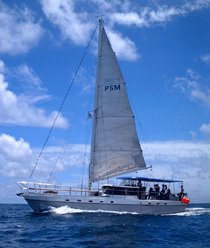
When I was 7 years old I spent 3 months in hospital with Rheumatic Fever and Dad made me a beautiful model yacht. It was a ketch with a lead keel and I sat in bed and dreamed about the ocean. You could say I programmed myself in that hospital ward. Before I could possibly afford it I set about building a 54ft yacht. By the time I launched it in '81, surfing was what I dreamed about most nights. I swapped my share in a successful architect's practice for the other partners share in the yacht.
Designing mine-sites for Alcoa and Western Mining paid well but I was driven to finish building the Electric Lamb by the dream of searching for perfect surf in exotic places and my passion for ocean sailing. Indonesia was a smorgasbord of surf back in the early '80s. We anchored off breaks that had no names and probably sailed right past more surf than most people ever see in a lifetime. It is actually pretty hard to spot good surf from out at sea on a yacht. There are still plenty of breaks out there that are only known to a handful of skippers today.
How did you get on to the Mentawais?

In the late '80s I found my self working in Jakarta for a company manufacturing polyethylene rotomoulded runabouts. My job was to develop a kind of VW of the sea for transport and fishing. We worked with the Kiwi inventors of the moulding process and came up with a 20ft open longboat that could be outboard powered. The factory was set up in Jakarta and they are now making 100s for tsunami relief. I hated being stuck in Jakarta because the surf was so far away and the traffic was so horrific.
Some mates in Margaret River showed me a photo in Tracks magazine that had everyone talking. Potzy taking off on a monster left "somewhere off Sumatra" We started looking at maps and thinking about where it could be. Another mate had taken the top brass from Rip Curl up to Enganno on his yacht and bumped into Indies Trader in the area. From what he said we were all pretty sure the wave was off the west coast of Enganno. Later I was in Martin Daly's office. I asked him point blank but he said "sworn to secrecy". Photos on his office wall were enough for me. Enganno just had to be the place and in '93 we set off on the yacht to explore. The Liddon boys and their mates, Steve Jacobs (owner of Adventure Komodo) plus Terry and Gary Keys were aboard.
What was it like in those early days?
Things got pretty nasty there for a while. What was going down?
In June '93 I invited Paul King to take a look at the surf we had found in Mentawai. Martin's big name passengers were plastered all over the surf magazines so the cat was way out of the bag. Kingie had been a solid booking agent for me in Bali and I thought of him to fill my boat and free me from ever going back to Jakarta looking for a job. Kingie said he as too busy so he sent his brother and a photog on a freebie with me. After they left the boat in Benkulu I found my chart with all the surf spots marked was gone. Wasnt worried, we knew the area by then and could have sailed without a chart. Kingie stopped taking my calls and never said thanks so figured he was up to something.
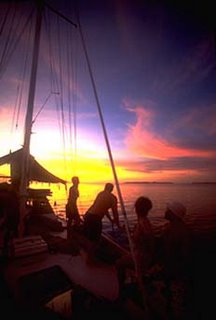
In '94 three STC boats turned up and no bookings for me so the stage was set for trouble. In '95 the Governor invited me to visit him to discuss the Mentawais. He wanted us to start a company and to take shares in a JV with the Provincial Government to develop land in the islands and promote sustainable tourism. You could say we had a bit of a head start in the charter game here and the other operators were nervous about that. They were all counting on the area remaining a "rule free" surf zone far away from government controls. When our new JV was announced Kingie organized a petition against the "Tavaruaization" of the Mentawais slamming me and our company. It was blatant defamation so we took him to court and won.
We had no contacts in the Aus east coast surf fraternity and Kingie had heaps so the stories in the surfing press just kept getting heavier and heavier. To me it was a game. Like pulling a tigers tail. We responded to each new attack by doing something unexpected. The stories just got wilder but out in the water we would all surf together and hardly talk about it. Like the media was a parallel universe that had nothing to do with us in the islands.
What was the best session you ever had/saw go down?
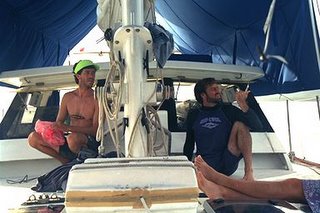
Best session I ever witnessed was in May 94. Picture perfect glassy day at Lances left with Tom Curren going deeper and deeper as the swell picked up to 10ft then 12ft or more. Tom just could do no wrong. He took out one of the Keys brothers Beama soft boards and scored the biggest wave of the day. Flicked out at the end of the wave and kept planing till he was 20m from where we were anchored. If you have surfed Lances left you know how big it has to be for that to be possible.
What is it about the Mentawais?
The "search" is an integral part of surfing that must awaken some of our ancient hunting DNA. In the late 80s the world shrunk with cheap jet travel and the birth of the internet. What blew everyone away about the Mentawais was the thought that there could be so much world class surf just an hours flying time from Singapore. It was like a blind spot in the collective consciousness of surfers and it fired every surfers imagination to think that there were still places like that on the planet.
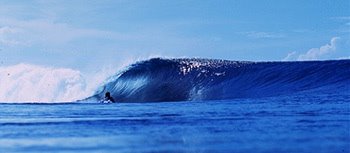
What elevates the Mentawais to the world's top surf vacation destination is the unique combination of light winds, endless points and islands and full exposure to roaring forties swell that has been turned and honed by the SE trades up the WA coast.
You’ve copped a lot of criticism over the years, why do you think that is?
Being one of the first to surf an entire archipelago is pretty amazing but being invited by the Governor of a province to come up with a plan to put the area on the wold map may be a first for a group of surfers anywhere. Maybe there were days it went to our heads a bit and maybe we could have handled some of the accusations and printed insults better than we did... Is it because I body board these days? Hey I love 4 wheel drive! Is it because I just don't give a fig about what the surf establishment think? Never did. Modern surfers have become the most self centred people on the planet. One surfer one wave. Fierce localism, crowding and big money for the winner. The industry is a product of that group mentality. Feels alien to me.
In the end, everyone loves to have someone to blame and I guess that always ended up being Rick. The interesting thing is that once you have been through it, you are immune.
10 years down the track, the Mentawais are No 1 on the world map and so far they have not been trashed by penny & dime tourism so who cares what people said in the heat of the moment. A lot of those who think they should hate me have never been here and certainly never met me. They just believed the media hype and that was fuelled by a couple of people who have huge vested interests in the area.
Do you have anything to add?
Time washes all the spin, smoke and mirrors away. Some surfers will look back on what happened and understand why I held my line. The Mentawais seem set to develop into a quality surf vacation destination and that happens it does not matter what people think of me. Give it time.
How did Island Aid come about?
The tsunami slammed into Aceh and it drove Jane and I nuts that nobody seemed to be aware that the coast line closest to the epicentre was going to be the hardest hit of all. We sent all our staff to Muara to help secure Electric Lamb with extra mooring ropes because the tide was going beserk. We watched the sand bar on the beach below our house go from flood tide to super low every 35 minutes. The river where the yacht sits was rushing in and out exposing the mud with fish flapping about then almost overflowing the banks. People were freaking out, Christina at Batang Arau hotel said cockroaches were swarming out of drains, leaches were climbing the banks of the river to escape the salt and squid were jumping onto the decks of boats. She was terrified but mostly worried sick about her boyfriend Chris and his family who were out in the Mentawais. It was much better after we talked to our Mentawai office and found out that the tsunami was less that a meter and that nobody was hurt. Chris said he did not even feel it on the boat and lost Australian surfer, Sam George, just kept on surfing at HTs while half the world and all the Aussie media searched for him.
It felt very weird, very bad, like some kind of primeval fear was being triggered at a cellular level in every living thing. Hard for us and we live on a hilltop. Our staff who live on the coastal plain were in total panic.... most of Padang was in panic. We kept thinking about Aceh but nobody knew anything. Padang got away with no physical damage but people were deeply disturbed. For the following 4 days and nights the Ocean pulsed like it was breathing! The tsunami was bouncing back off the land masses.... the entire Indian Ocean was reverberating. Every night there would be a false tsunami panic. It spread by sms on mobile phones. Sometimes it was because of water rising higher than normal at high tide but in a few cases gangs started the panic and then looted empty houses near the beach. Nobody was sleeping and there was no parking space left at the top of our hill. We had to open the gates so people could drive in and sleep in their cars.

The day of the tsunami, Jane and I published a webpage calling for help. It was changed a little but it is still up at http://www.mentawai.com/aceh1.html We started emailing and calling everyone we knew to help. The Mayor called and offered his help if we could get our boats supplied and send them up to find out what had happened in Aceh. After Katrina it is easier to understand how it could happen that there was no news, no information, no contact from the entire west Aceh coast and the islands off shore. The wave had wiped out the cell phone towers and repeater stations. It was raining hard and even the airforce overflights were useless.
The British defence attache was calling us because they had no information and neither did TNI. We located a lost Brit and the Ambassador was over the moon. Rolls Royce, HSBC and Standard Chartered Bank offered to fund our mother ship. After we arrived in Meulaboh and saw the destruction first hand we understood why Aceh remained silent after the wave. It was a knock-out blow on a global scale. Some scientists say 100 Hiroshima bombs some say 30 odd. Powell said he had never seen a battle field that came close.
What’s it been like since?
The mad rush started the day after the tsunami. Meetings and people arriving, calls from lots of others wanting to help, but getting the boat back together was the hardest thing. We had the "Lamb" all stripped out and had just replaced the stem post. We had to find all the bits, whack on some temporary fiber-glass to protect the new timber and find our crew. Half were on holidays and all of them were very worried about their families safety. The Lamb left for Aceh on the 31st and the next day we sent KM Sembilan after her with doctors and paramedics. Two frantic weeks later we were anchored off Meulaboh in a huge old ferry called Batavia with 200 tons of aid supplies, 5 doctors and 25 volunteers aboard. The pressure has been on since then and that is the hardest part. Just having to keep on it every day, chasing sponsors, working out travel stuff for volunteers, dealing with the government and the aid industry.
What’s been the most devastating consequence of the tsunami you’ve seen or heard about?
The visible damage is simply impossible to grasp without being there. Jason Childs was aboard and his images are awesome but when he and I look at them we just shake our heads. The weird unearthly ambience of the Aceh coast gives you goose bumps. Maybe it is because so many died and so many have never been found. The invisible damage is what gets to you after a while. Every person you meet has so much trauma and pain locked up. They just cant function properly. We give people therapy after they go into a war zone or are hurt in a train crash but the Aceh people just have to try to contain it..... so much loss, so much pain and all of it on top of decades of fear. Generations have grown up knowing nothing but war and no way could a war ever rival the tsunamis sheer scale of death and mayhem. The aid and physical reconstruction are all for nothing unless we comfort and de-traumatise the survivors.
What has been the heaviest experience for you in responding to the tsunami’s devastation?
I think Jason will agree that our heaviest day was at Baba Nipah about a week into our first aid delivery. There was nothing that was even recognisable as a village left and because the swamps at that point of the coast run inland about 4km, there was total destruction as far as the eye could see in every direction. Even the hills were dead brown because the wave ran up over 30m and mulched everything it reached. It just shredded big trees and even cars and left huge drifts of composting debris across the landscape. That's where the bodies were. The smell and the fat green blowflies led the village menfolk to the rotting remains. We followed, balancing on fallen palm trunks as we crossed stinking pools with bones protruding from the oil black water.
The smell and the unearthly vision of these brave men gently lifting the bones and shaking off the maggots will always be with me. Scraps of clothing were the only clues to the identity of family members, wives and kids broken bodies trapped in that sweltering swamp of death. Over 700 people died leaving only 150 men, 15 women and 22 kids alive. With swamps all around, only a few made it to the high ground on the peninsular. We gave the village body bags, dettol, gloves and boots donated by Rolls Royce & Unilever in Jakarta. Up till then they had been working without protection or even soap. We kept thinking about what our helicopter pilot had said. Several Indonesian doctors had been infected by gangrene bacteria from injured patients. The doctors arms had been amputated.
What is the best aspect of organising aid delivery?
For every mind numbing scene of destruction and misery there were the magic moments. The times when we reached families who had been fending alone since the day of the tsunami. The joy of Jane getting a little boy to say his first words after three weeks of numb silence. The faces of children melting from frowns to smiles and laughter as we handed them fresh apples. Their first laughter since the day their world fell apart.
Small victories like digging our first well and sharing the fresh water with the head of village, his tears mixing with the well water. The smiles the day our US and Canadian volunteers finished a jetty and gave fishing nets to the people on Pulau Raya and the surprise that evening when the village men turned up with prawns and a mud crab for us.
What is the worst aspect of organising aid?
Delivering the aid is enormously rewarding, beyond any financial reward or material pleasure. It is on a different plane. The hard part is keeping the money supply going. Finding a balance between time spent fund-raising and field work is the biggest challenge.
 Does being a surfer prepare you in any way?
Does being a surfer prepare you in any way?We were lucky to have on board a combination of surfers, surf charter boat crew and Jane, who is a crayfish skipper & a surfer. Only surfers would have tried to deliver to the places we went. Only surfers would understand a stretch of coastline they had never seen just by reading the charts and the water and swell on the day. Only surfers would be crazy enough to take heavily loaded small boats in through the breakers. Our bridge of boats only worked because we pulled together a team who have spent years in the surf charter industry in this area.
What’s it like having your house as base-camp?
It is fantastic to be back home on our hill top in Padang. The lush greenery and jungle all around is like eye candy after months in a post-tsunami desert. It is hard to wake up and not be able to help our new friends in Aceh but we are still getting aid through to some of our "lost" villages overland or on the Electric Lamb. The best part of working at home is the energy that volunteers continue to bring aboard. At the moment we are setting up a big plant nursery on our hill and focusing on school supplies and medical missions to the Mentawais and Nias. We worked with Sam Schultz to deliver 7 fishing boats, ice boxes and a generator to Baba Nipah a few weeks ago and more boats will be ready soon.
Privacy? Jane and I lost it in the tsunami.
Where are you in a year or two?
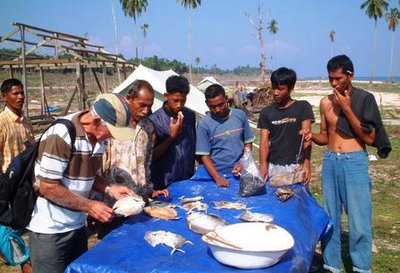 Pulau Raya fishermen discuss the catch with ELM's fishery expert
Pulau Raya fishermen discuss the catch with ELM's fishery expertChris Russell - image - Rick Cameron March 2005
Our total focus now is to secure a new ship to resume our work at full scale. A US funder has committed to raising part of the money and we have located a great vessel at an exceptional price. There is so much yet to be done. Delivering emergency help is fairly straight forward actually. We load it, deliver it and distribute it. The hard work of reconstruction has just begun. (see http://www.island-aid.org)
What are the waves in the area (Mentawais, Nias, north?) like after the tsunami?
Surfing is a bit of a dream at the moment. Some of the villages we work with are in surf zones but we only managed to paddle out a couple of times at Pulau Raya. There is an unnamed right that gets very solid and breaks for a couple of hundred meters. We did most of our work before the surf season started but we saw lots of set-ups that the locals say are completely new. Some are pretty spooky with surf now breaking down the main streets of what were once villages in Aceh. I dont think anyone will surf those places for a very long time.
Simeulue and Nias were uplifted with some breaks now improved and quite a few that are now pretty radical. Maybe too radical most days. Walls of coral where there were once keyholes. The Mentawais have had about 20-30cm of uplift and the surf is hardly effected but this part of the island chain is now overdue for the next big one.
We want to be ready. It is not a mater of if, just when. We are working with villages to make sure they have clear and well prepared escape paths to the nearest hill. The hill has to be more than 25m high, 50m is better. The Mentawais will have about 5 minutes warning of a tsunami and the experts say there is a high probability that it will be a 5-10m wave. That's measuring it the way the Hawaiian's do. We could be lucky and have a series of smaller adjustments rather than one big one. That happened in April 2005 between the Mentawais and Padang. No tsunamis and no damage but a big adjustment. It is impossible to be sure what will happen.... but it is possible to be ready.
Now the peace treaty is signed, we will be back up the coast with surfing volunteers and with a more paced approach to long term aid. Hope that will mean the odd weekend off, plus regular dawn and sunset surf sessions. Tourism can help many of these areas recover hope and the employment is desperately important for the next generation. The tsunami kids.

What are your priorities for Island Aid?
The work we see as most critical now is aimed at mitigating tsunami risks and empowering fishing communities all along the west coast. Indonesian fishermen have always struggled but since the tsunami a lot of other problems have surfaced, such as timber shortages and soaring fuel prices, and a lot of them are now in a desperate situation. Traditional timber boats use much more timber than western boats and need larger motors to get them moving. A lot of fish boat owners have fired their crew and tied up their boats; many traditional fishermen can’t afford the fuel to get out where the fish are and so they all compete close to shore. Modern materials could have a huge impact on boat strength, lightness and hence performance under power, paddle or sail. It is time for a quantum leap in boat efficiency. We have some top naval architects and boat designers involved in developing prototypes and we are setting up a boat-building training centre to introduce new designs and materials. Gary Young has agreed to fly over and teach our team how to best laminate bamboo using epoxy infusion techniques that he developed for his amazing bamboo surf boards.
Along the way we have chanced into a pretty radical tsunami refuge solution for the villages that are near the beach and miles from the nearest hills. Again the key ingredient is bamboo but this time chemically-treated giant bamboo that grows all over the highlands of West Sumatra. If we get a smaller tsunami like they had in Sri Lanka, the white water will just wash right through the building while villagers stay safe 10-metres above the ground. Nobody can be sure what will happen here but a three-to-five-metre tsunami is considered the most likely by experts.
There is little chance we will see a repeat of the 100-foot high grinders that flattened Aceh but we can’t rule out 10-metre-plus waves. Dealing with that had us stumped until we saw the locals building tsunami escape vehicles in Nias: they were flat rafts of driftwood with 20-litre drums lashed to the corners. I almost cried when they asked me if I thought it would work and I have not been able to get the desperation of their situation out of my mind since. Rather than try to build a structure that will stand fast against the incredible power of a mega-tsunami we have come up with a design that lifts off its foundations and is washed inland by the largest wave. You could call it the world’s first building that surfs. A ‘Tsunami Ark’








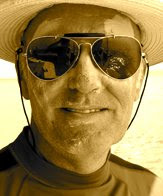

0 Comments:
Post a Comment
<< Home